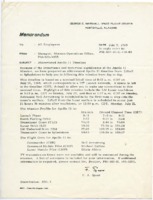
Heinz Hilten Collection
Dublin Core
Identifier
Heinz Hilten Collection
Title
Heinz Hilten Collection
Description
At the start of the Second World War, Heinz Hilten (1909 to 2013) was drafted into the German army, where he worked with von Braun’s V-2 rocket team at Peenemünde. In 1954, Hilten made his way to America, where he rejoined von Braun.
Hilten helped plan the growth of Alabama’s Redstone Arsenal until 1960, when he began designing laboratories, control centers, test stands, and administrative buildings for the newly minted Marshall Space Flight Center; Hilten also helped design the Saturn rocket program.
Hilten was also a founding member of the Huntsville Symphony Orchestra.
Hilten helped plan the growth of Alabama’s Redstone Arsenal until 1960, when he began designing laboratories, control centers, test stands, and administrative buildings for the newly minted Marshall Space Flight Center; Hilten also helped design the Saturn rocket program.
Hilten was also a founding member of the Huntsville Symphony Orchestra.
Collection Tree
- Local History Collections
- Heinz Hilten Collection

